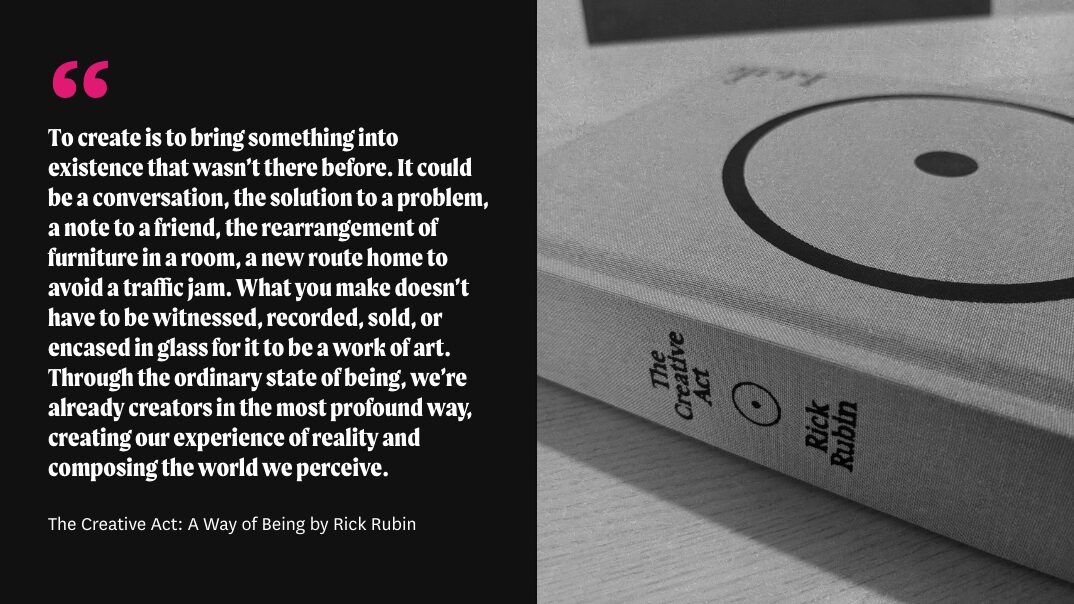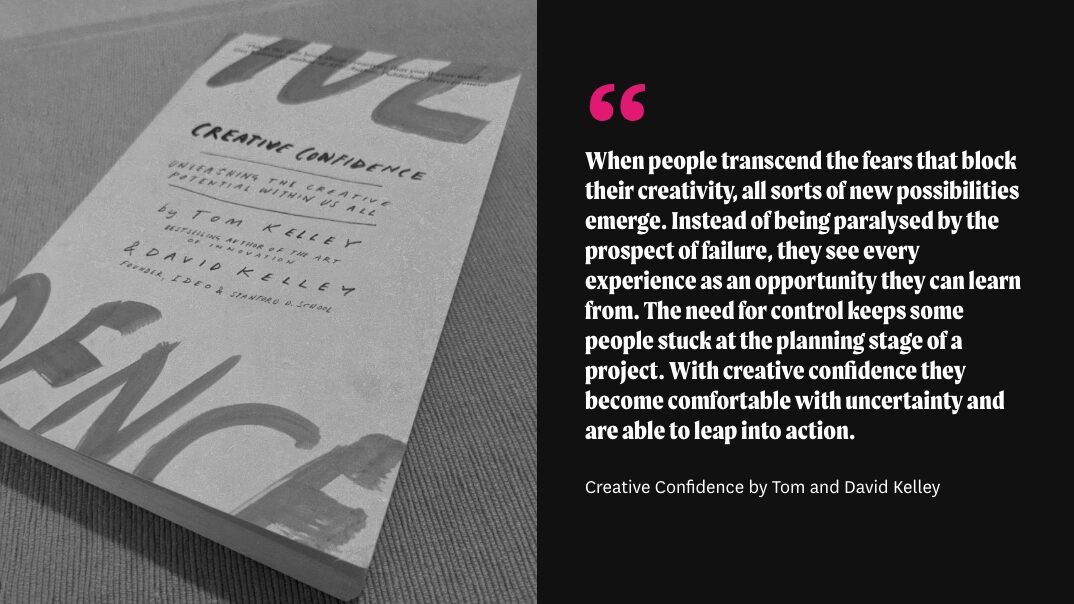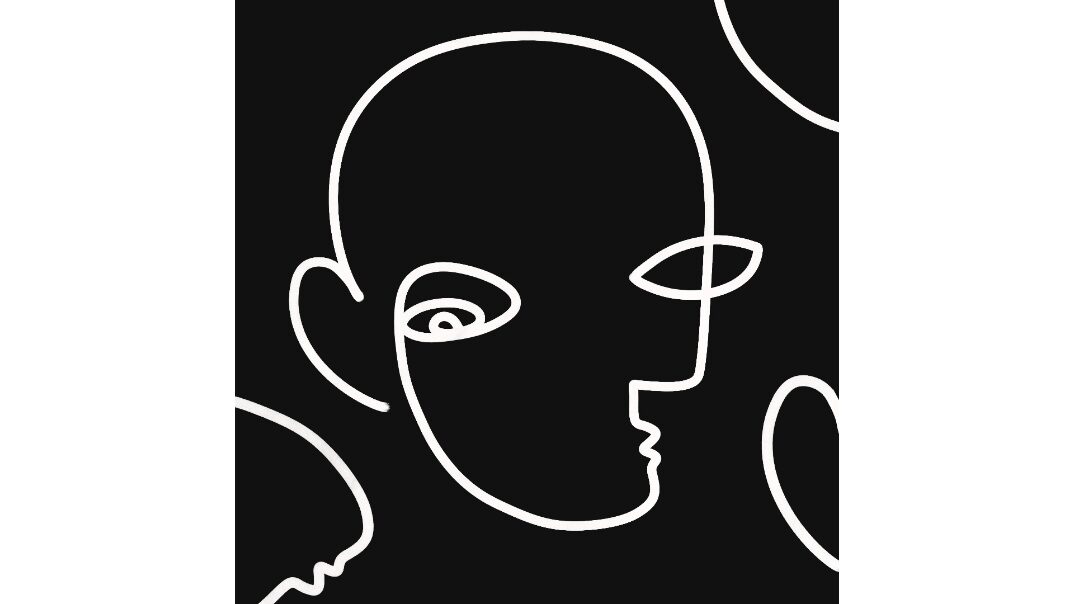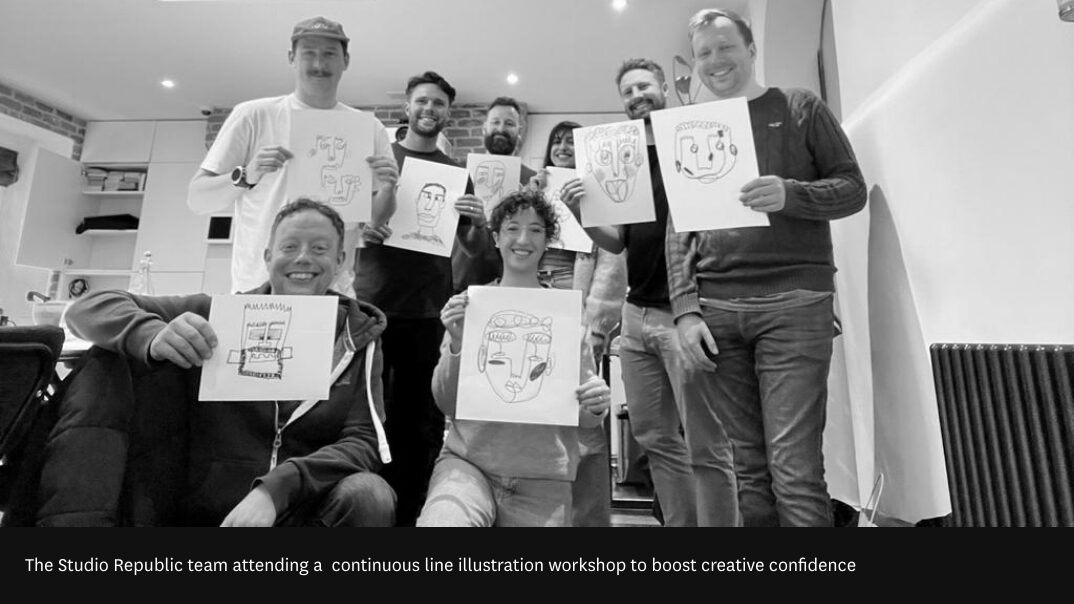A reflection on creativity: changing perspectives through creative confidence
What is creativity?
When thinking about creativity, many people associate this with being artistic. The truth is, while an artistic person is definitely creative, a creative person doesn’t necessarily have to be artistic. Creativity is not a characteristic that we’re either born with or without: we are all intrinsically creative but just like a muscle, it is something that needs to be regularly used and trained.
In this blog, our Mid-weight Designer Silvia Scifo shares her insights on creativity, confidence and her personal experience with discovering the benefits of creative practices.

Born creatives
As children, we’re all creatives. Think about how we all used to scribble abstract shapes with crayons on every possible surface, how we enjoyed playing off-key notes on our toy instruments, or how we’d dance our hearts out without a care of missing a move.
Unfortunately, at some point in growing up, a lot of us lose confidence and interest in these things or start being told how we should do things. We acquire self-consciousness, and we start comparing everything we do in favour of doing things “the right way”. It seems that only the ones who pursue a career or hobby in something using these talents are perceived as the creative kind.
Yet, creativity is so much more than that. It’s a way of looking at the world in a different and unconventional way, it’s the ability to find effective solutions to our problems, how we approach these and how we find ways to achieve our goals. Life can be approached creatively no matter our job title: we are all capable, we just need to find small ways to rediscover our inner creativity.

Flex your creative muscles
One of the great things about honing your creativity is the transferrable skills it gives you to use in all areas of your life. So, whatever you want to use creativity for, taking up simple ways to keep your creative muscles trained will help you build this into your everyday routine. The hardest part of this is moving past the mental block and fear of judgment we gained when we were younger but remembering that these are things you are doing for yourself and for no one else to see, will make it easier to let go and embrace your creativity.
Creative hobbies can be a great addition to your personal life, but they don’t need to be restricted to time outside of work. They can be a real asset in your professional life too, regardless of what job you’re in. Here are some suggestions of ways you can implement creative practices into your work:
1. VISUAL CUES
Next time you’re taking notes during a meeting or a briefing, try using as many visual cues and mind maps as possible instead of typing it all out. Play with shapes, arrows, symbols, and keywords – simple, yet effective!
2. DOODLE
Doodling is a playful way to get your creative juices flowing when you’re taking a break or in the middle of a long phone call. You can do this totally aimlessly and without intention, so it doesn’t distract you from the work at hand. It can be a useful outlet to help make more mental space and re-focus your mind when coming back to a task.
3. IDEAS DIARY
Keep an ideas diary and always note down solutions to problems, innovations, questions, or something new you might want to try. This will help keep your mind sharp and discover new ways of approaching goals and challenges.
4. BREAK THE CYCLE
Always remember to take a step back. It’s important to take breaks to refresh your creative flow and come back to your task with a fresh pair of eyes. You might start noticing both problems and solutions you had previously missed when being too involved for too long, finding new and innovative ways to tackle your work.
5. TALK IT OUT LOUD
Talking through your task can be a great way to gain clarity and uncover new ways to describe your work, helping to ignite new solutions and gain different perspectives. Simply having someone listening while you explain your process, might challenge your actions, ignite solutions to problems and provide directions on the next steps to take.

Find your style
Although many of us are plagued with self-doubt about our creative abilities, it just means we haven’t found our own style yet. For example: if you draw human figures by making a circle and five lines, instead of a fully proportioned and anatomically correct body, you still drew a human body – just in a different way.
That is exactly what I experienced when despite being a digital designer and having loved and studied art for my whole life, I believed I was disadvantaged for not being able to draw and create how everyone else did. This all changed when very recently, I realised people loved my quirky and abstract continuous line style. Through consistent creative practices, I found the perfect way of experimenting, learning and finding my own personal approach and the confidence that comes with it. So much so, that I now proudly call myself a designer and illustrator!
If you’re looking to embrace your creativity or apply creative practises to your own life, don’t be afraid to try something new, make mistakes and be bold. Creative routines can provide a break-through if stuck in an over-structured process flow and are a great tool to learn new approaches and gain the creative confidence you’ll then be able to apply to many circumstances. There is no set goal to achieve, so enjoy the journey and see where your creativity can take you.


